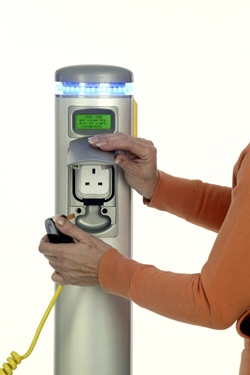European Electric Vehicle Plug wars

Disagreement is breaking out amongst European EV plug manufacturers in relation to the choice of plug types for public charging stations and in car chargers for electric vehicle networks
In June 2010 the EU mandated two groups to develop a European Standard on charging points for EV’s. The standard is expected by mid 2011. Voting closed on 20.5.2011.
The candidates include:
- IEC 62196-2 “Type 1” – single phase vehicle coupler – reflecting the SAE J1772/2009 automotive plug specifications. This is a 120 V option, specific to North American and Japan√جª¬ø√جª¬ø
- IEC 62196-2 “Type 2” – single and three phase vehicle coupler – reflecting the VDE-AR-E 2623-2-2 plug specifications, favoured by German manufacturers ,the utilities Nuon and RWE have started to deploy a network of charging poles in Central Europe (Netherlands, Belgium, Germany, Switzerland, Austria, Poland, Hungary, Slovenia, Croatia) using the Type 2 Mode 3 socket type based on the widely available 400V three-phase domestic power grid.√جª¬ø
- IEC 62196-2 “Type 3” – single and three phase vehicle coupler with shutters – reflecting the EV Plug Alliance proposal, formed on March 28, 2010 by electrical companies in France and Italy. They propose a plug that uses shutters for safety. Many commentators believe that the shutters themselves can cause more problems than they solve√جª¬ø
The German Type 2 plug is widely expected to be adopted and has only been blocked by the French and Italians over concerns regarding the lack of shutters that prevent children from getting accidental shocks from domestic plugs.
Charging an electric car overnight from a domestic AC supply takes about 8 hours. Ultra fast charging by DC is only possible from a high voltage supply at commercial premises, and would take 30 minutes for an 80% charge. If Type 2 becomes the preferred solution, EV owners would need to carry a second power lead for emergency battery top ups from 13 amp sockets when away from home or public charging points.
Originally posted 2011-06-20 00:00:00.


